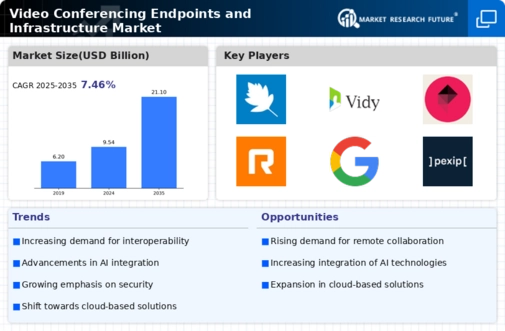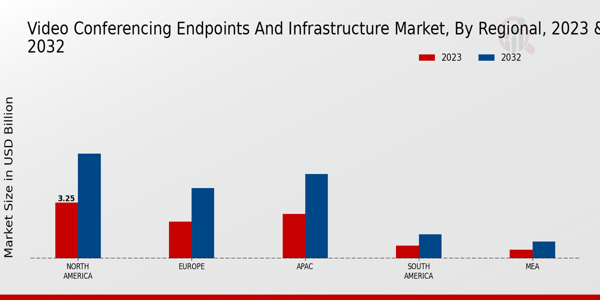The Video Conferencing Endpoints and Infrastructure Market has experienced significant growth in recent years, largely driven by advancements in communication technology and the increasing demand for remote collaboration tools. As businesses and organizations across various sectors adapt to more flexible work environments, the need for effective video conferencing solutions has become paramount. This market comprises a diverse range of products, including hardware endpoints like cameras and microphones, as well as software solutions that enable seamless communication and collaboration. Competitive insights within this market reveal a landscape characterized by rapid innovation, strategic partnerships, and a keen focus on improving user experiences.
Companies are continually evolving their offerings to meet the rising expectations of users for high-quality, reliable, and secure video conferencing solutions.
StarLeaf has established itself as a notable player within the Video Conferencing Endpoints and Infrastructure Market, known for its exceptional capabilities tailored to meet the needs of both enterprise clients and small organizations. With a robust platform integrating video conferencing, messaging, and calling, StarLeaf addresses the diverse requirements of remote collaboration while ensuring simplicity and ease of use. The company’s strengths are highlighted by its commitment to user-friendly technology and high-level security measures, making it a preferred choice for organizations concerned about data privacy.
Furthermore, StarLeaf's ability to provide seamlessly integrated hardware and software solutions enhances its market presence, making the platform a comprehensive choice for businesses aiming to enhance their communication infrastructure. This combination has positioned StarLeaf favorably in a competitive landscape where customers seek solutions that foster collaboration while mitigating operational challenges.Lifesize is another key competitor in the Video Conferencing Endpoints and Infrastructure Market, recognized for its high-definition video conferencing solutions and cloud-based infrastructure.
The company specializes in providing an integrated video experience that combines reliable performance with exceptional video quality, catering to enterprises that prioritize visual clarity in communication. Lifesize's offerings are particularly appealing due to the scalability of their solutions, allowing organizations to expand their video conferencing capabilities as needed without compromising quality or user experience. Additionally, Lifesize's dedication to interoperability means that its systems can easily integrate with a wide array of existing tools and platforms, further enhancing its attractiveness in the marketplace.
The company's focus on innovation, user satisfaction, and comprehensive customer support reinforces its competitive position in a market that continually demands excellence in video conferencing technologies and infrastructure.























